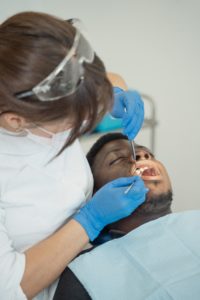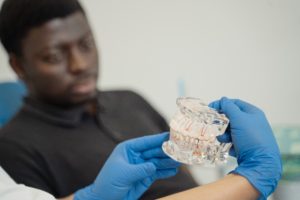 There are many causes for the a tooth to lose a significant coronal structure including tooth structure removal as part of the root canal therapy, when removing caries from a tooth, as well as tooth fracture. Tooth fracture can cause a loss of substantial amount of tooth structure and may lead to the loss of structural integrity. A tooth can be fractured by hard food diet (nuts etc.), abnormal bite in the back teeth, large dental filling, improperly placed dental fillings interfering with the bite, parafunctional habits such as night grinding, tooth surface loss (attrition, abrasion, erosion), abnormally shaped tooth with deep groove and previous history of failed dental filling in the same tooth.
There are many causes for the a tooth to lose a significant coronal structure including tooth structure removal as part of the root canal therapy, when removing caries from a tooth, as well as tooth fracture. Tooth fracture can cause a loss of substantial amount of tooth structure and may lead to the loss of structural integrity. A tooth can be fractured by hard food diet (nuts etc.), abnormal bite in the back teeth, large dental filling, improperly placed dental fillings interfering with the bite, parafunctional habits such as night grinding, tooth surface loss (attrition, abrasion, erosion), abnormally shaped tooth with deep groove and previous history of failed dental filling in the same tooth.
Since we use our teeth daily for talking, speaking, chewing, eating and even breathing, it is important to provide protection to a tooth that has lost a significant amount of structure.. Replacing missing tooth structure can improve our self-confidence . There are several options your dentist can suggest. A direct composite resin restoration allows the dentist to do the restoration straight away. This treatment is often used when there is a small loss of tooth structure.
 If there is a huge loss of tooth structure, your dentist might suggest doing a partial or full coverage crown treatment. Metal ceramic and all ceramic crowns can be used to restore tooth with significant loss of coronal structure. Generally, all restorative dental materials need to have the suitable physical, mechanical, biological and aesthetic properties to be used in to restore teeth. The crown material covering the teeth needs to be able to adapt to oral functions such as biting load, intraoral biological environment and others. The mechanical properties of a material to be selected as a dental crown should have sufficient fracture toughness, compression strength, tensile strength and fatigue strength. It should also closely resemble enamel and dentine’s coefficient of thermal expansion and thermal conductivity capability while having pleasing, non-degradable aesthetic properties over time. It also needs to be biocompatible in which it maintains the harmony of restored dental hard tissue and adjacent soft tissue.
If there is a huge loss of tooth structure, your dentist might suggest doing a partial or full coverage crown treatment. Metal ceramic and all ceramic crowns can be used to restore tooth with significant loss of coronal structure. Generally, all restorative dental materials need to have the suitable physical, mechanical, biological and aesthetic properties to be used in to restore teeth. The crown material covering the teeth needs to be able to adapt to oral functions such as biting load, intraoral biological environment and others. The mechanical properties of a material to be selected as a dental crown should have sufficient fracture toughness, compression strength, tensile strength and fatigue strength. It should also closely resemble enamel and dentine’s coefficient of thermal expansion and thermal conductivity capability while having pleasing, non-degradable aesthetic properties over time. It also needs to be biocompatible in which it maintains the harmony of restored dental hard tissue and adjacent soft tissue.
Dr Muhammad Syafiq Alauddin and Dr Aws hashim Ali Al-Kadhim, are researchers and clinical lecturers at Faculty of Dentistry, Univeristi Sains Islam Malaysia.
